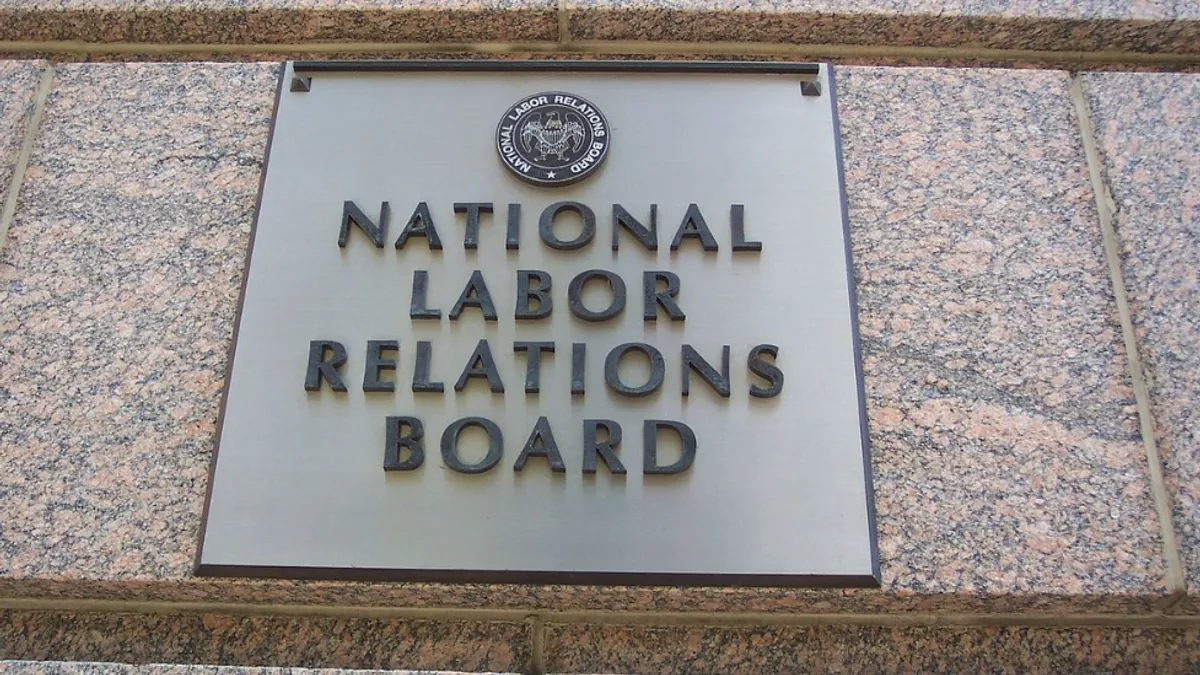Unfair labor practice charge filings rose 10% and union petitions rose 3% for fiscal year 2023, ending Sept. 30, the National Labor Relations Board reported in October.
An NLRB spokesperson said that the agency does not break down statistics by industry, so it does not have data specific to construction, but employers and unions can be searched for in their database. A search of “construction” turns up 5,570 results out of 453,517, or about 1%.
Even without industry-specific data, contractors must be aware of the current labor climate, and what that can mean for their union and non-union workforces, and what other pro-union rules — such as a recent change amending procedures in union elections — the NLRB could make that will affect them in the future.
“In some ways this is the tip of the spear,” said Steven Bernstein, partner and co-chair of Atlanta-based law firm Fisher Phillips’ Labor Relations Practice Group. “It really remains to be seen what a lot of these [NLRB] initiatives will achieve.”

Andrew MacDonald has seen more charges filed by individuals, as opposed to unions, he said.
“There is a general surge in momentum and awareness of employee labor rights,” said MacDonald, co-chair of the labor management relations practice at Philadelphia-based law firm Fox Rothschild. “At the same time, unions are also being more aggressive in filing more charges than they have in the past,” he added.
None of this should be a surprise, said Scott R. Green, vice chair of employment and labor at New York City-based law firm Goldberg Segalla, and member of Associated Builders and Contractors. The Biden administration has touted itself as the most pro-union administration ever, and the make-up of the NLRB is “fundamentally different and far more pro-union than anything we’ve seen in 50 years,” he said.
The NLRB has five members — though there is currently one vacancy — and describes itself “as a quasi-judicial body in deciding cases on the basis of formal records in administrative proceedings.” The president appoints members to five-year terms with Senate approval. Currently, three Democrats and one Republican serve on the board, according to its website.
Labor climate
Nearly every industry in the U.S. is riding a wave of pro-union sentiment. Recent labor negotiation wins by the UAW against the big five automakers and Teamsters new contract with UPS, have continued this momentum.
“You are likely to see unions are more aggressive, especially if any sort of federal money or federal construction projects are involved,” said John Logan, professor and department chair of labor and employment studies at the San Francisco State University Lam Family College of Business. “Unions have a feeling that they have an ally in the White House and now is the time to try to make significant gains.”
Cases of some construction employers acting in bad faith may make things harder for contractors in a pro-union climate.
For example, wage theft is more of a problem in construction than in any other industry. The Department of Labor’s Wage and Hour Division recovered over $32.9 million in back wages for over 17,000 construction workers in fiscal year 2022, over $5 million more than the second-ranked food services industry.
In one such case earlier this month, Massachusetts Attorney General Andrea Joy Campbell ordered Framingham, Massachusetts-based BPI Construction Management to pay $927,000 for a subcontractor’s failure to pay prevailing wages to workers on two public projects.
The NLRB has also formed an enhanced partnership with OSHA that now provides for coordinated enforcement of laws prohibiting retaliation against workers who raise safety concerns, according to a Bloomberg report.
These combined efforts will bring more scrutiny to labor practices, though they will need funding. The NRLB is also calling on Congress to pass the president’s budget request of an additional $376 million for the agency. That would be a major increase in funding, more than doubling their current budget of about $300 million. It’s also a much bigger ask than what they received FY 2022: a $25 million bump.
In a statement, Jennifer Abruzzo, general counsel for the NLRB, said that the money “is much needed to effectively and efficiently comply with our congressional mandate when providing quality service promptly to the public in conducting hearings and elections, investigating charges, settling litigating meritorious cases and obtaining full and prompt remedies for workers whose right are violated.”
Training once a luxury, now a necessity
In addition to knowing what recent and future NLRB decisions will mean for the construction industry, Bernstein said that employers should train supervisors about the legal do’s and don’ts and how to interact with workers who may make union recognition demands.

“In the past effective training was a luxury. Now it’s a necessity,” he said. Due to an August NLRB ruling that determined that unions can represent workers without an election, “even one single unfair labor practice can trigger a bargaining order.”
Contractors should also be aware of labor-related rules tied to any federal construction projects, especially those coming from the Infrastructure Investment and Jobs Act and the Inflation Reduction Act, said Green. They come with project labor agreements that include things like prevailing wages and certified apprentice shops — though both ABC and Associated General Contractors of America just filed a lawsuit against the Biden Administration over requiring prevailing wages on federal work.
Two in three Americans approve of labor unions, according to an August Gallup poll, and experts don’t suspect that sentiment will change anytime soon, especially in construction, which has a tight labor market. The situation has been made worse by construction workers aging out and into retirement, Green added. One in five construction workers are 55 or older, according to the Bureau of Labor Statistics.
“That makes it more challenging as an employer. You have to keep these people happy because you need them,” Green said. “Your life depends on it.”
Correction: This story has been updated to include the correct spelling of Andrew MacDonald’s name.





















